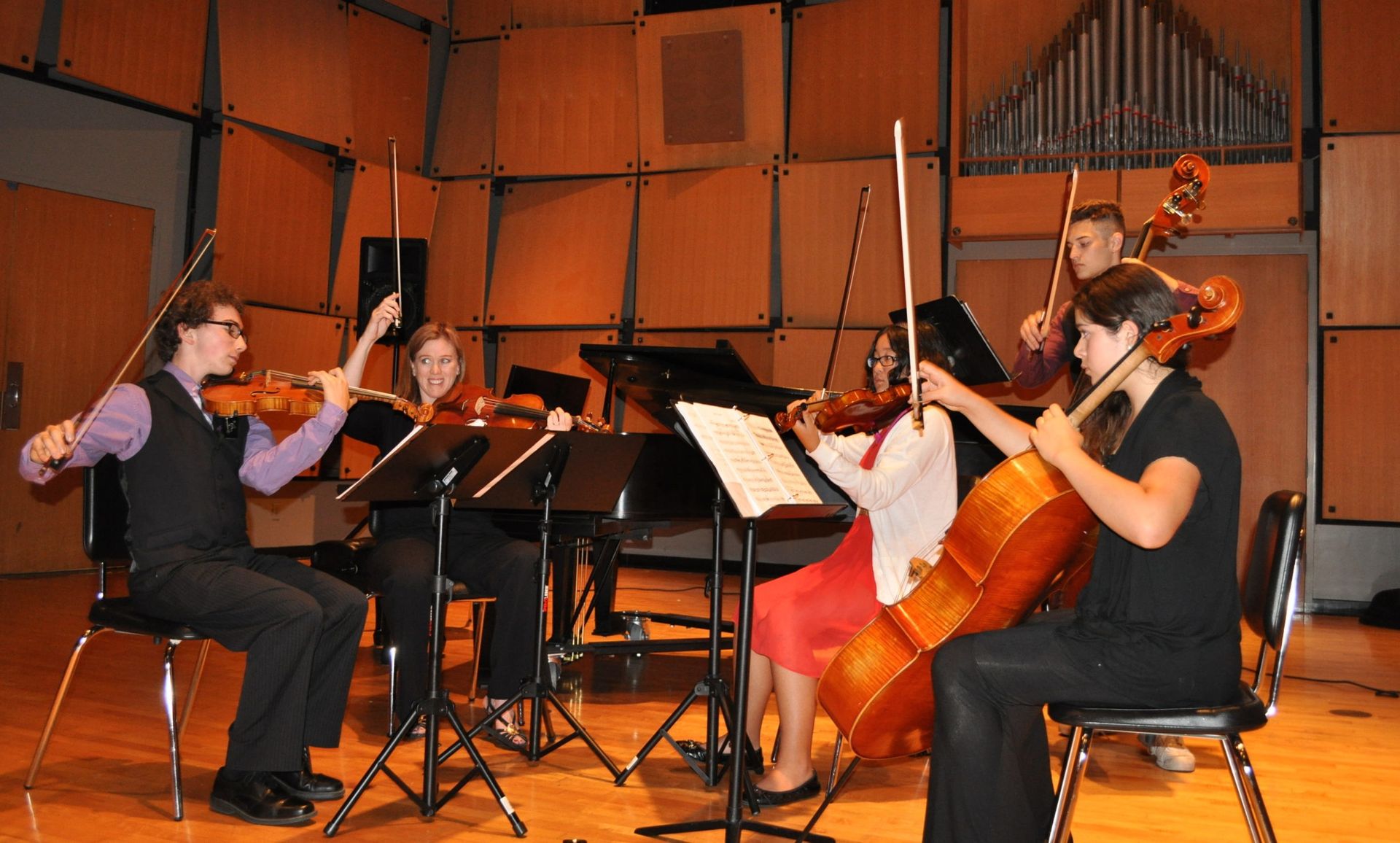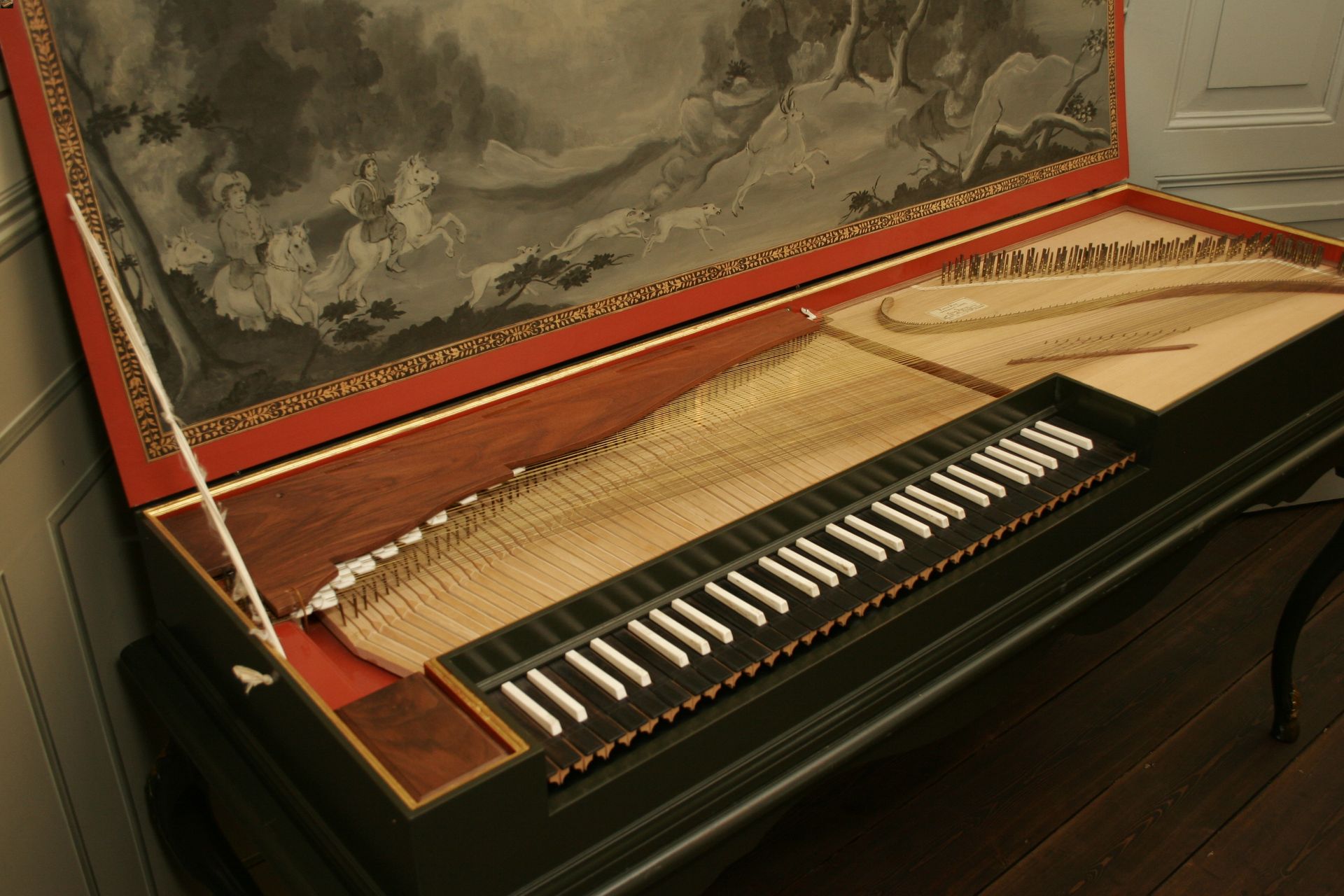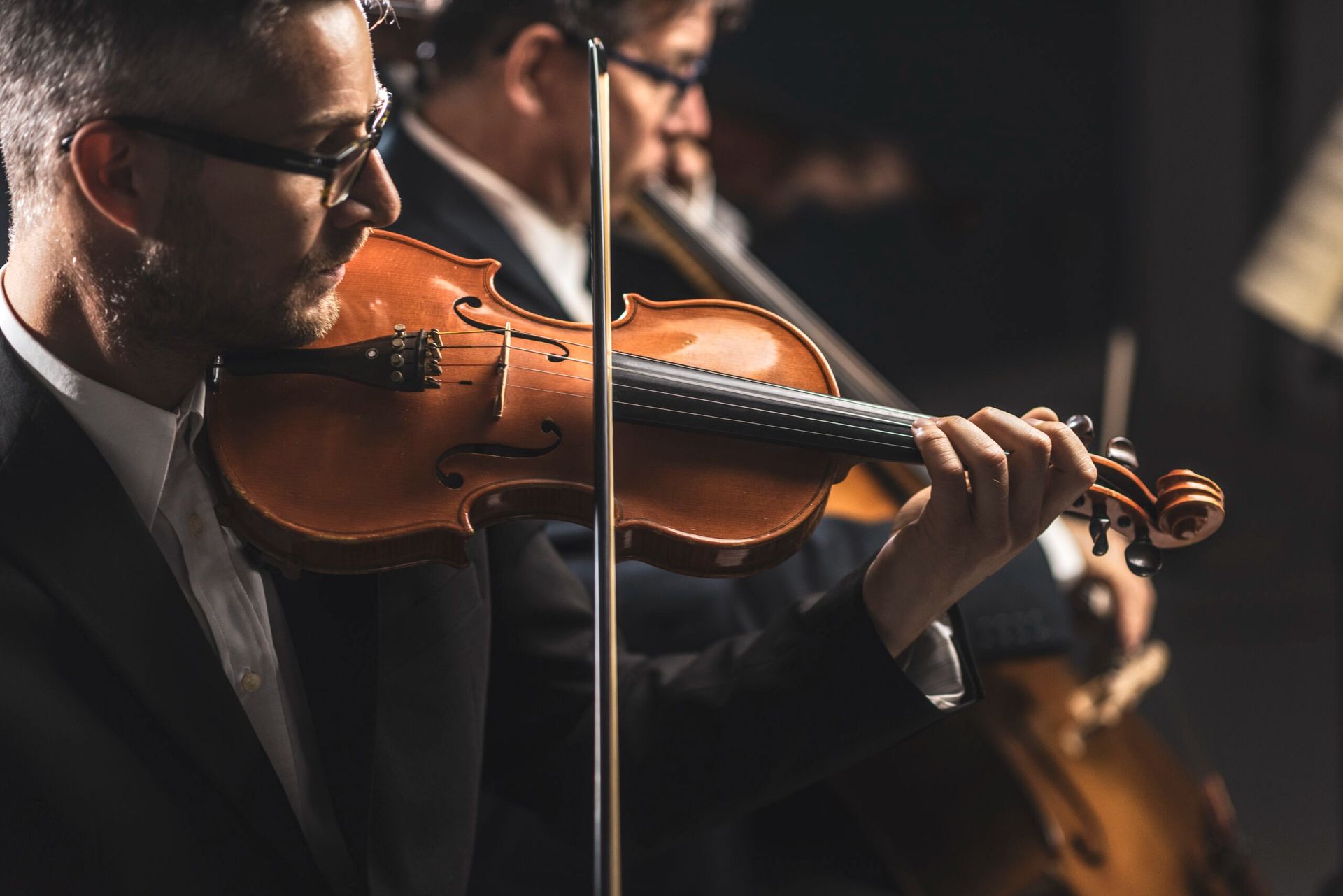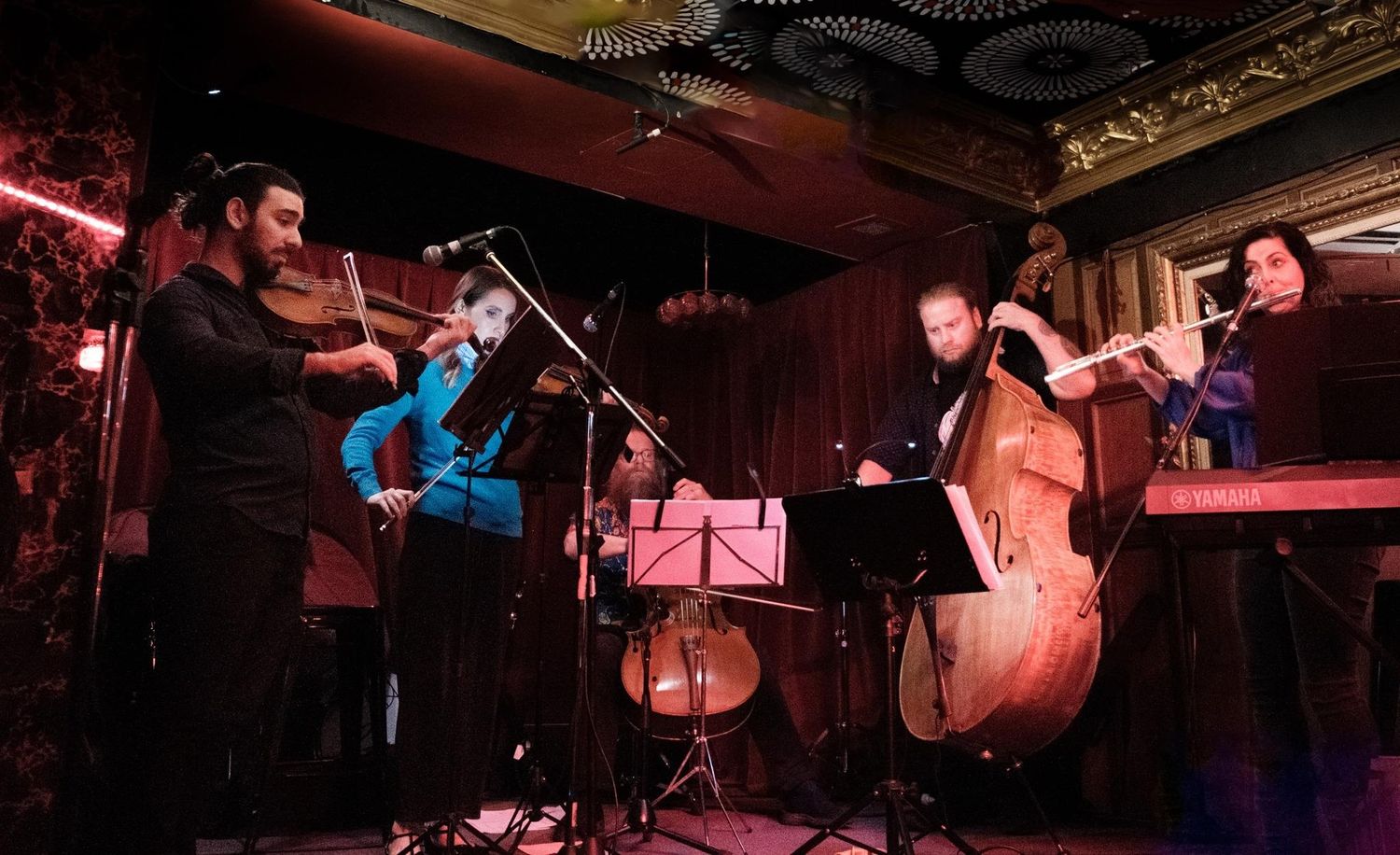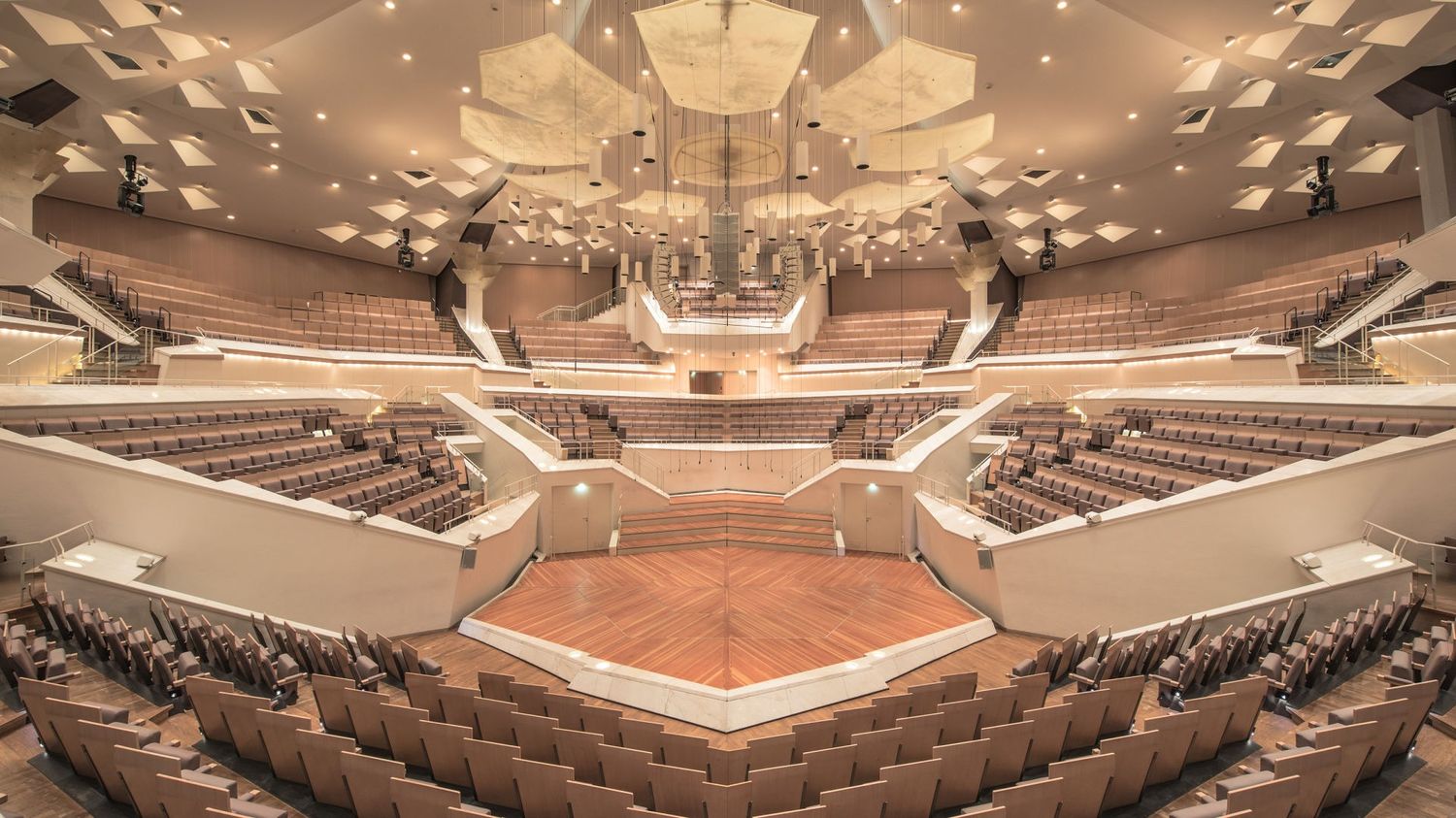(Many of the links in this article redirect to a specific reviewed product. Your purchase of these products through affiliate links helps to generate commission for AudioLover.com, at no extra cost. Learn more)
Introduction
Chamber music is a genre of classical music that holds a special place in the hearts of music enthusiasts. Its intimate and collaborative nature allows musicians to truly connect and express their artistry. Unlike orchestral music, chamber music is performed by a small group of musicians, typically between two and nine players, who perform without a conductor.
The term “chamber music” originated from the idea that this type of music was designed to be performed in small chambers or private rooms, rather than in large concert halls. It dates back to the 17th century, during the Baroque period, and has evolved and flourished ever since.
What makes chamber music unique is the interplay and communication between the individual musicians. Each instrument has its own voice and plays an essential role in creating a balanced and harmonious sound. Unlike in orchestral music, where the conductor guides and shapes the performance, chamber music requires a high level of musical understanding and synergy among the players.
Chamber music encompasses a wide range of musical forms, including duets, trios, quartets, quintets, and ensembles with even more players. It allows for intricate musical dialogues, expressive phrasing, and improvisation within the structure of a composition. The repertoire of chamber music is vast and diverse, with compositions from notable classical composers to contemporary artists.
In this article, we will explore the definition of chamber music, delve into its rich history, examine the characteristics of this genre, discover famous chamber music composers, and discuss its role in classical and contemporary music. Additionally, we will explore the benefits of playing chamber music, both as a performer and as a listener.
Definition of Chamber Music
Chamber music is a genre of classical music that focuses on small ensemble performances. It is characterized by its intimate setting and the absence of a conductor. The term “chamber” refers to the private rooms or chambers where this music was originally performed, often for the enjoyment of small groups of friends or patrons.
Unlike orchestral music, which involves large ensembles with multiple sections, chamber music is performed by a small group of musicians, typically ranging from two to nine players. This allows for a more intimate and nuanced performance, where each instrument’s voice can be heard clearly and the musicians can closely interact with one another.
One of the defining features of chamber music is its emphasis on collaboration. Unlike in orchestral settings where a conductor leads and shapes the performance, chamber music requires a shared musical understanding and equal contribution from each musician. This collaborative aspect fosters a unique sense of communication and unity among the performers.
Chamber music is known for its versatility in terms of instrumentation. It can be performed by various combinations of instruments, such as string quartets (two violins, viola, and cello), piano trios (piano, violin, and cello), or woodwind quintets (flute, oboe, clarinet, bassoon, and French horn). This diversity in instrumentation allows for a wide range of musical colors and textures.
Furthermore, chamber music repertoire spans different musical periods, from Baroque to contemporary compositions. It includes both original compositions written specifically for small ensembles, as well as arrangements of larger works adapted for smaller groups. Chamber music composers often explore complex harmonic progressions, intricate melodies, and intricate contrapuntal techniques.
Overall, chamber music offers a unique listening experience that allows the audience to engage with the music on a more intimate level. The absence of a conductor and the close proximity between the musicians and the audience create an immersive atmosphere that invites listeners to fully immerse themselves in the beauty and intricacies of the music.
History of Chamber Music
The history of chamber music can be traced back to the Baroque period in the 17th century, where it emerged as a genre of music favored by royal courts and the aristocracy. During this time, chamber music was often performed in intimate settings, such as palace chambers or salons.
Notable composers of the Baroque era, such as Johann Sebastian Bach and Antonio Vivaldi, wrote numerous compositions for small ensembles, including trio sonatas, quartets, and suites. These early chamber music pieces were typically written for strings, with the addition of a keyboard instrument, such as harpsichord or organ.
In the Classical period of the 18th century, chamber music experienced significant development and popularity. Composers like Wolfgang Amadeus Mozart and Franz Joseph Haydn composed a wealth of chamber music works, contributing to the growth of the genre.
The Classic era saw the emergence of the string quartet as one of the most prominent forms of chamber music. Composed of two violins, a viola, and a cello, the string quartet became a staple in chamber music repertoire. Haydn, often referred to as the “Father of the String Quartet,” composed numerous groundbreaking works in this form that established the structural and expressive possibilities of the quartet.
In the 19th century, the Romantic period brought further innovation to chamber music. Composers such as Ludwig van Beethoven and Johannes Brahms expanded the scope of chamber music composition, incorporating more complex harmonies and emotional depth into their works.
During this time, the piano trio, consisting of piano, violin, and cello, gained prominence. Composers like Robert Schumann and Franz Schubert wrote influential piano trios that showcased the expressive capabilities of these instruments in a chamber music setting.
The 20th century witnessed a diverse range of styles and experimentation in chamber music. Composers like Claude Debussy and Maurice Ravel embraced impressionistic elements, while Arnold Schoenberg and his contemporaries explored atonality and new tonal systems.
Today, chamber music continues to evolve and thrive. Contemporary composers such as Philip Glass and John Adams push boundaries, incorporating elements of minimalism and other experimental techniques into their chamber music compositions.
The rich history of chamber music has left behind a legacy of masterworks that inspire and captivate audiences to this day. Its intimate and collaborative nature has allowed for endless creativity and exploration, making chamber music an essential part of the classical music tradition.
Characteristics of Chamber Music
Chamber music has several distinctive characteristics that set it apart from other genres of classical music. These characteristics contribute to the unique and captivating nature of chamber music performances:
- Intimacy: One of the defining features of chamber music is its intimate setting. Unlike the grandeur of orchestral performances, chamber music is performed in smaller venues, allowing for a closer connection between the audience and the musicians. This intimate atmosphere creates a sense of shared experience and allows listeners to appreciate the nuances and subtleties of the music.
- Collaboration: Chamber music is a collaborative art form that requires musicians to closely interact and communicate with one another. Each musician has a unique voice and contributes to the overall musical conversation. This collaborative aspect fosters musical synergy, allowing for seamless coordination and musical expression.
- Balance and Clarity: With its small ensemble size, each instrument in chamber music has an equal role to play, resulting in a balanced and transparent sound. The clarity of individual voices allows the listener to discern each part and appreciate the intricate interplay between instruments. This emphasis on balance and clarity showcases the technical and expressive abilities of the musicians.
- Expressiveness: Chamber music provides a platform for musicians to express their musical ideas and emotions. Its smaller-scale performances allow for greater freedom in interpretation, enabling musicians to convey their personal artistic vision. The absence of a conductor gives each musician the opportunity to shape the performance, resulting in a more personal and expressive rendition.
- Flexibility: Chamber music repertoire encompasses a wide range of musical styles and forms. From Baroque contrapuntal compositions to Romantic lush melodies, chamber music showcases the diversity and versatility of classical music. Its flexible nature allows for experimentation and exploration of various musical techniques and ideas.
- Interaction with the Audience: Chamber music performances often involve a close connection with the audience. Musicians can engage with the listeners, sharing insights about the music and creating a more interactive and engaging experience. This interaction promotes a deeper appreciation and understanding of the music being performed.
These characteristics combine to create a captivating and immersive experience for both musicians and listeners. Chamber music invites us to explore the intricacies of musical dialogue, revealing the beauty and expressive power that can be found within a small ensemble.
Ensembles in Chamber Music
Chamber music is performed by a variety of ensembles, each with its distinct combination of instruments. These ensembles showcase the range of possibilities and soundscapes that can be achieved in chamber music performances. Here are some of the most common ensembles found in chamber music:
- String Quartet: Arguably the most iconic ensemble in chamber music, the string quartet consists of two violins, a viola, and a cello. This ensemble allows for a rich and balanced sound, with the two violins often playing the melodic lines while the viola and cello provide the harmonic and rhythmic foundation.
- Piano Trio: The piano trio comprises piano, violin, and cello. This ensemble combines the virtuosity and expressiveness of the violin and cello with the versatility and harmonic support of the piano. The piano often takes on a leading role, with the violin and cello providing melodic and supporting lines.
- Woodwind Quintet: The woodwind quintet consists of flute, oboe, clarinet, bassoon, and French horn. This ensemble showcases the beautiful timbres and colors of woodwind instruments. The range of wind instruments allows for a wide variety of expressive possibilities, from delicate and lyrical passages to energetic and vibrant sections.
- Brass Quintet: The brass quintet features two trumpets, a French horn, a trombone, and a tuba. This powerful ensemble highlights the rich, resonant sound of brass instruments. Brass quintets can create a majestic and bold sound, suitable for both classical repertoire and contemporary compositions.
- Chamber Orchestra: While chamber music traditionally involves small ensembles, chamber orchestras are also considered part of the chamber music genre. Chamber orchestras typically consist of a smaller number of musicians compared to full-scale symphony orchestras. This allows for more intimate and nuanced interpretations of orchestral works.
These ensembles represent just a fraction of the various combinations that can be found in chamber music. Other popular chamber music ensembles include duets, trios, quintets, and larger chamber groups. Each ensemble configuration offers its unique sound and artistic possibilities, showcasing the versatility and creativity of chamber music as a genre.
Famous Chamber Music Composers
Throughout the history of chamber music, numerous composers have made significant contributions to the genre. Their works continue to be celebrated and performed by musicians worldwide. Here are some of the most renowned chamber music composers:
- Wolfgang Amadeus Mozart (1756-1791): Mozart is known for his mastery of various musical forms, including chamber music. His string quartets and piano trios, such as the “Haydn” Quartets and the “Kegelstatt” Trio, are considered cornerstones of the chamber music repertoire. Mozart’s chamber compositions are characterized by their melodic beauty, intricate textures, and profound musical expression.
- Ludwig van Beethoven (1770-1827): Beethoven’s chamber music compositions pushed the boundaries of the genre, with his string quartets often regarded as some of the most groundbreaking in the repertoire. His late string quartets, such as the “Late Quartets” and the “Grosse Fuge,” showcase his innovative harmonic language and emotional depth.
- Johannes Brahms (1833-1897): Brahms perfected the art of the chamber music genre, particularly through his works for piano and strings. His three piano trios stand as pillars of the chamber music canon, displaying his mastery of Romantic-era composition and rich harmonic language.
- Franz Schubert (1797-1828): Schubert’s chamber music compositions, such as his string quartets and piano trios, are revered for their lyrical melodies and emotional depth. His “Trout Quintet” is particularly famous for its infectious melodies and unique instrumentation, featuring piano, violin, viola, cello, and double bass.
- Antonín Dvořák (1841-1904): Dvořák’s chamber music compositions exude folk-inspired melodies and rhythmic vitality. His string quartets and piano trios, including the beloved “Dumky” Trio, captivate audiences with their expressive power and rich musical storytelling.
- Johann Sebastian Bach (1685-1750): Bach’s contributions to chamber music are found in his compositions for solo instruments, particularly the violin and the cello. His “Sonatas and Partitas for Solo Violin” and “Suites for Solo Cello” showcase his mastery of polyphony and musical intricacy.
These composers represent just a fraction of the extensive roster of notable chamber music composers. Others, including Joseph Haydn, Claude Debussy, Maurice Ravel, and Béla Bartók, have also made significant contributions to the genre, further enriching the chamber music repertoire with their unique styles and musical innovations.
Today, these composers’ works continue to be performed and cherished by chamber music ensembles worldwide, maintaining their enduring legacy in the world of classical music.
Chamber music encompasses a diverse range of types and forms, each with its own unique characteristics and structures. These different types and forms reflect the evolution of the genre and the creative exploration of composers. Here are some of the most prominent types and forms of chamber music:
- String Quartet: The string quartet is one of the most popular and iconic forms of chamber music. Composed of two violins, a viola, and a cello, the string quartet allows for a rich and balanced sound, highlighting the individual voices of each instrument. This form has been widely explored by composers throughout history, from Haydn and Beethoven to Bartók and Shostakovich.
- Piano Trio: The piano trio combines piano, violin, and cello, creating a versatile and expressive ensemble. This form offers a wide range of musical possibilities, with the piano often providing the harmonic foundation and the violin and cello engaging in melodic exchanges. Notable composers of piano trios include Mozart, Beethoven, and Brahms.
- Sonata: A sonata is a chamber music composition usually written for one or two instruments. It follows a specific three or four-movement structure, consisting of an opening movement (allegro), a slow movement (adagio or andante), a minuet or scherzo, and a final movement (allegro). The sonata form has been utilized by composers from the Classical period to the present.
- Suite: The suite is a collection of individual dance movements arranged in a particular order. Each movement represents a different type of dance, such as allemande, courante, sarabande, and gigue. Suites often feature instruments like harpsichord or piano, and were popular during the Baroque period. Bach’s “Suites for Solo Cello” and Handel’s “Water Music” are examples of famous suite compositions.
- Chamber Concerto: A chamber concerto is a composition that features a soloist or a group of soloists accompanied by a chamber orchestra or a small ensemble. It combines the virtuosic qualities of solo performance with the collaborative nature of chamber music. Vivaldi’s concertos for various solo instruments, such as “The Four Seasons,” are prime examples of chamber concertos.
- Octet: An octet is a chamber music composition written for eight instruments. This form allows for a broader and more expansive sound compared to smaller ensembles. Mendelssohn’s “Octet in E-flat Major” is a renowned example of an octet, showcasing the composer’s masterful use of counterpoint and melodic invention.
These types and forms of chamber music demonstrate the wide variety of structures and instrumental combinations that have been explored by composers throughout history. Each form offers unique opportunities for musical expression, showcasing the creativity and ingenuity of the composers who have contributed to the rich repertoire of chamber music.
Role of Chamber Music in Classical Music
Chamber music plays a significant role in the world of classical music, both historically and in the present day. It has influenced and shaped the development of classical music, and continues to hold a special place in the hearts of musicians and audiences alike. Here are some key roles that chamber music plays in the classical music landscape:
- Artistic Expression: Chamber music allows composers to explore the full range of their artistic expression. With a smaller group of musicians, composers have the freedom to experiment with harmonies, textures, and melodic ideas. The intimate setting of chamber music performances also facilitates a direct and personal connection between the composer’s vision and the audience.
- Collaborative Musicianship: Chamber music requires a high level of collaboration and musicianship among the performers. Each musician has the opportunity to contribute and engage in meaningful musical dialogue. This collaborative aspect promotes a deep understanding and appreciation of the music, fostering a sense of unity and synergy among the musicians.
- Technical Skill Development: Performing chamber music demands exceptional technical proficiency from each musician. The small ensemble setting exposes any weaknesses or inconsistencies in technique, pushing musicians to refine their skills. The intricate musical interplay in chamber music requires precise ensemble coordination, expressive phrasing, and precise intonation.
- Intimate Concert Experience: Chamber music performances offer an intimate and immersive concert experience for both performers and listeners. The absence of a conductor and the close proximity between the musicians and the audience create a unique sense of connection and engagement. This intimate atmosphere allows the audience to fully appreciate the nuances, subtleties, and emotions conveyed in the music.
- Historical Preservation: Chamber music repertoire offers a glimpse into the musical history and traditions of different eras. Many renowned classical composers, from Mozart and Beethoven to Brahms and Schubert, have written significant works for chamber ensembles. Performing and appreciating chamber music allows us to preserve and honor the musical heritage of the past.
- Platform for New Music: Chamber music continues to be a platform for new music and contemporary composers. Today, many living composers are actively writing chamber music compositions, pushing the boundaries of the genre and exploring new sonic possibilities. Chamber music ensembles often commission and premiere new works, contributing to the evolution and innovation of classical music.
Overall, chamber music’s role in classical music is multi-faceted, encompassing artistic expression, collaborative musicianship, technical skill development, unique concert experiences, historical preservation, and the promotion of contemporary works. Its enduring popularity and impact on the classical music world demonstrate its ongoing significance and relevance in the present day.
Chamber Music in Contemporary Music
While chamber music has deep roots in classical music, it also holds relevance and influence in contemporary music. In recent years, there has been a resurgence of interest in chamber music as a genre and a growing recognition of its adaptability to diverse musical styles and contexts. Here are some ways in which chamber music is embraced and incorporated into contemporary music:
- Blending Genres: Contemporary composers often blend genres and incorporate elements of chamber music into other styles, such as jazz, folk, and world music. These hybrid compositions fuse the intimate and collaborative nature of chamber music with the improvisational and rhythmic elements found in these genres, creating unique and captivating sonic experiences.
- Contemporary Chamber Ensembles: There is a proliferation of contemporary chamber ensembles dedicated to performing new music and exploring unconventional approaches to chamber music. These ensembles often collaborate with composers and commission new works, pushing the boundaries of what is possible in chamber music. Their performances often incorporate visual elements, technology, and interdisciplinary collaborations.
- Electronic and Electroacoustic Chamber Music: Many contemporary composers integrate electronics and electroacoustic elements into chamber music compositions. This fusion of acoustic instruments with electronic soundscapes expands the sonic possibilities and creates immersive and experimental listening experiences. The use of live electronics, digital processing, and spatialization techniques further blurs the lines between traditional chamber music and electronic music.
- Chamber Music in Film and Media: Chamber music is often utilized in film scores, adding emotional depth and intimacy to cinematic narratives. Composers working in the film industry draw inspiration from classical chamber music traditions to create evocative and memorable soundtracks. This integration of chamber music in film exposes a wider audience to the beauty and expressiveness of this genre.
- Collaborations with other Artistic Disciplines: Chamber music collaborations with other artistic disciplines, such as dance, theater, and visual arts, have become increasingly common. These interdisciplinary collaborations enhance the creative possibilities and expand the audience reach of chamber music, blurring the boundaries between different art forms and fostering innovative and thought-provoking artistic experiences.
Contemporary chamber music exemplifies the versatility and adaptability of the genre, showcasing its ability to evolve and embrace new artistic directions. By integrating contemporary compositional techniques, technology, and interdisciplinary collaborations, chamber music continues to captivate audiences and inspire new generations of musicians and composers.
Benefits of Playing Chamber Music
Playing chamber music offers musicians a unique and enriching musical experience that goes beyond solo or orchestral performance. It provides a myriad of benefits, both musically and personally. Here are some of the key advantages of playing chamber music:
- Musical Communication and Collaboration: Chamber music requires musicians to communicate and collaborate closely with one another. This fosters a deep musical connection and enhances skills in active listening, response, and musical dialogue. It develops a heightened sense of teamwork, mutual understanding, and adaptability.
- Development of Listening Skills: Playing chamber music trains musicians to listen attentively and to respond to the nuances and subtle changes happening within the ensemble. It enhances the ability to adjust dynamics, phrasing, and tempo in real-time, leading to increased sensitivity and musicality.
- Technical Proficiency: Chamber music repertoire often demands a high level of technical proficiency from each musician. The exposure to intricate musical passages and the necessity for precise coordination with other instrumentalists fosters technical mastery and improves overall instrumental technique.
- Musical Interpretation and Expression: Chamber music provides a platform for musicians to explore their musical interpretation and expression. With fewer musicians involved, instrumentalists have more freedom to shape the music according to their personal artistic vision. This promotes individuality, creativity, and the development of a personal musical voice.
- Understanding of Ensemble Playing: Playing chamber music develops a deep understanding of ensemble playing, as each performer must navigate their individual role within the group. Musicians learn to balance their own voice while supporting and blending with others. This enhances one’s ability to play in larger ensembles, such as orchestras or bands.
- Enhancement of Sight-Reading and Memorization Skills: In chamber music rehearsals, musicians often encounter new music that requires sight-reading and quick adaptation. This develops the ability to read and interpret music accurately on the spot. Additionally, memorizing chamber music compositions promotes memory skills and leads to a deeper connection with the music.
- Exposure to a Wide Range of Repertoire: Chamber music exposes musicians to a diverse range of musical styles and repertoire. Exploring different composers, musical periods, and genres broadens musical knowledge and appreciation, enriching one’s understanding of the classical music tradition.
- Personal Growth and Confidence Building: Playing chamber music encourages personal growth, self-expression, and confidence building. Overcoming the challenges of performing in a small ensemble setting cultivates self-assurance and resilience, while the sense of artistic connection and accomplishment brings great personal fulfillment.
Overall, playing chamber music offers musicians a wealth of musical and personal benefits. It nurtures communication skills, technical proficiency, musical interpretation, and ensemble playing abilities. It promotes personal growth, collaboration, and a profound appreciation for the art of making music together.
Conclusion
Chamber music is a genre that holds a special place within the world of classical music. Its intimate and collaborative nature allows for unique musical conversations and a deep connection between the performers and the audience. Throughout history, chamber music has evolved and flourished, with composers from various musical periods contributing a rich repertoire of masterpieces.
From the delicate interplay of a string quartet to the expressive dynamics of a piano trio, chamber music offers a rich and diverse listening experience. Its versatility allows for exploration of different musical styles, blending genres, and integrating contemporary elements.
Playing chamber music also provides musicians with numerous benefits, including the development of communication and collaboration skills, enhanced listening abilities, technical proficiency, and personal expression. It fosters a deep understanding of ensemble playing and cultivates personal growth and confidence.
As we appreciate the artistry and skill of chamber music performers, we are reminded of the power of music to bring people together, evoke emotions, and transcend cultural barriers. Chamber music preserves the rich traditions of classical music while also embracing innovation and pushing the boundaries of what is possible.
In conclusion, chamber music continues to captivate audiences and inspire musicians worldwide. Its timeless beauty, expressive depths, and the human connection it fosters make it a cherished and essential component of the classical music tradition. Whether performed in a small chamber, a grand concert hall, or in innovative contemporary settings, chamber music will continue to enchant and engage audiences for generations to come.

